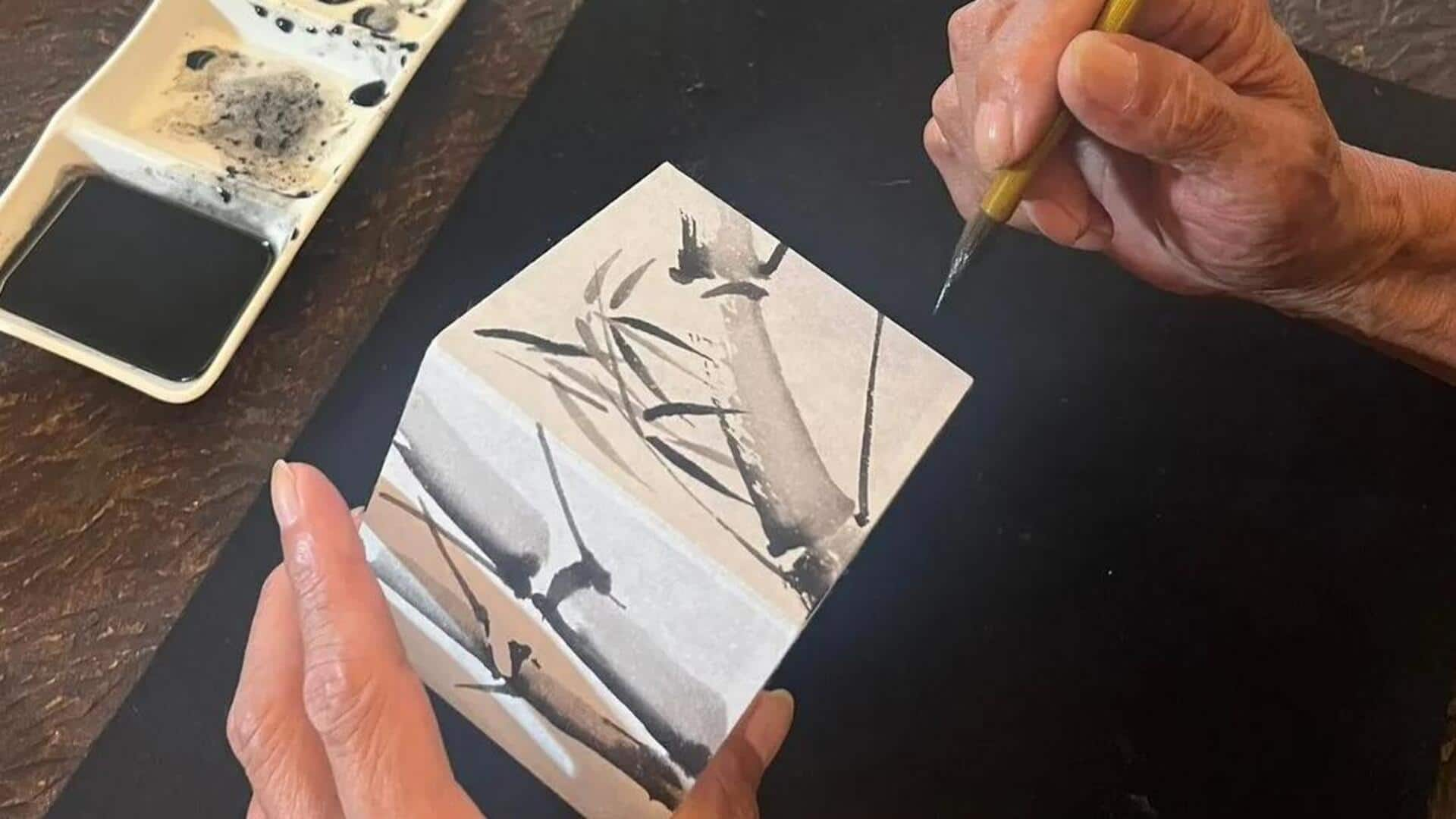
Discover the art of Sumi-e ink painting
What's the story
Sumi-e ink painting is a traditional East Asian art that highlights simplicity and nature's beauty. It originated in China, but Japanese artists later adopted it and honed its techniques. The art form employs black ink, water, and brushes to render expressive images on paper or silk. It captures the essence of the subject, rather than rendering it realistically, making it a unique and meditative practice for artists.
Brush techniques
The art of brush strokes
In sumi-e painting, brush strokes are everything. Different techniques are used by artists to create different textures and effects. How hard you press on the brush can alter the thickness of lines, and how you change the angle can create different shapes. Mastering all of these techniques enables artists to express emotions and movement within their work.
Negative space
Importance of negative space
Negative space is essential in sumi-e painting. It is the blank spaces around or in between the subjects of a piece of art. With an adept use of negative space, artists can bring out their subjects and maintain balance in their work. This technique invites viewers to look at what is there and what is not there in a piece.
Essential tools
Materials used in sumi-e painting
Sumi-e requires specific materials: ink sticks or liquid ink, brushes made from animal hair or synthetic fibers, rice paper or silk canvas, and an ink stone for grinding solid ink sticks with water. Every tool contributes to achieving desired effects in paintings. For instance, softer brushes allow smoother lines, while harder ones offer more control over details.
Mindful practice
Practicing mindfulness through art
Along with creating beautiful art, sumi-e painting is also about practicing mindfulness. The practice requires focused attention on every stroke you make by hand. It requires your complete concentration, away from distractions like noise pollution. Such disturbances often break your concentration levels required for creative processes. In this art, every little detail is very important. It seeks to capture the essence of the subject matter artistically.